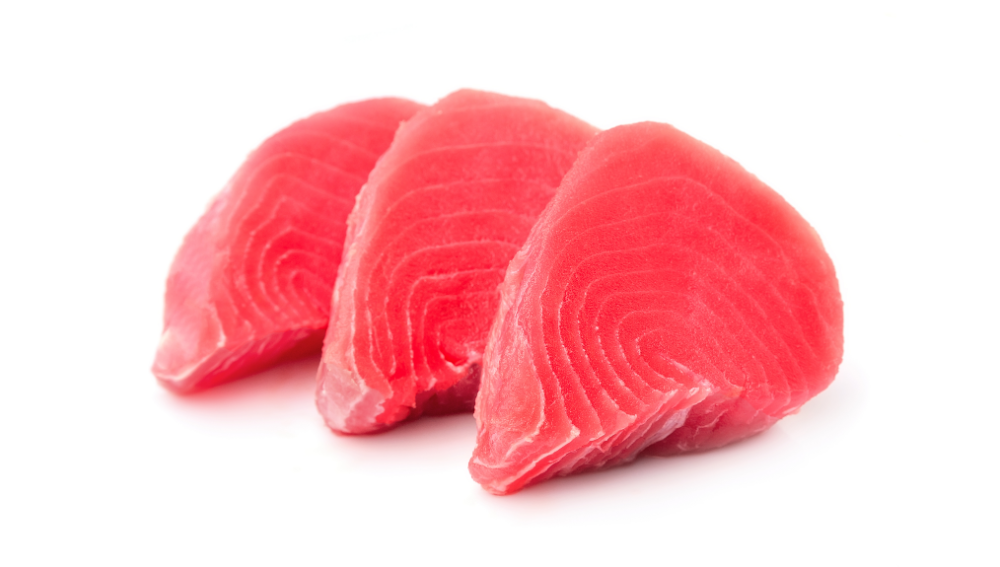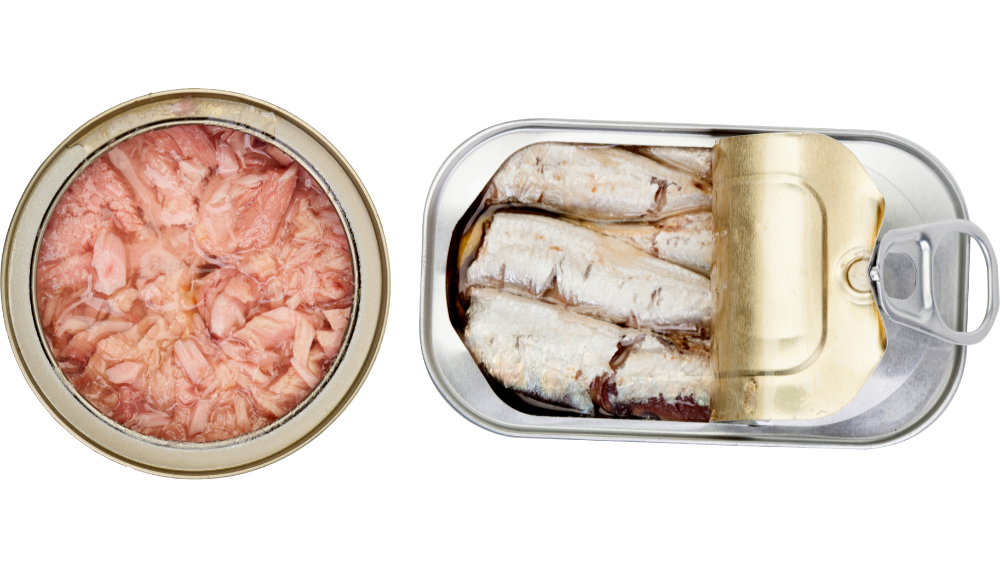Fresh tuna is a popular and versatile ingredient in many dishes. If you have some leftover or are planning to store fresh tuna in the fridge, you may be wondering how long it will last before it goes bad.
This article will provide you with the necessary information on how long fresh and canned tuna can last in the fridge, as well as best practices for storing and freezing tuna.
Understanding Tuna: Types and Characteristics Before discussing how long tuna can last in the fridge, it is important to understand the different types of tuna and their characteristics. There are several species of tuna, including skipjack, yellowfin, and bluefin, each with their unique flavor and texture.
Additionally, tuna can be purchased fresh, frozen, or canned, each with its own shelf life and storage requirements. By understanding the types and characteristics of tuna, you can better determine how long it will last in the fridge and how to properly store it.
Key Takeaways
- Fresh tuna can last up to two days in the fridge if stored properly.
- Canned tuna can last up to four days in the fridge once opened.
- Proper storage and handling of tuna can help prevent spoilage and ensure its freshness.
Understanding Tuna: Types and Characteristics

Tuna is a popular fish that is enjoyed around the world for its versatility and taste. There are several types of tuna, including bluefin, yellowfin, and albacore, each with their own unique characteristics.
Fresh tuna is typically sold in steaks or fillets and should be consumed within a few days of purchase. It is an excellent source of protein, vitamins, and omega-3 fatty acids, which are essential for maintaining good health.
Canned tuna, on the other hand, has a longer shelf life and can be stored for several months. It is a convenient and affordable option for those who want to enjoy the benefits of tuna without the hassle of preparing fresh fish.
Bluefin tuna is one of the most prized varieties of tuna due to its rich flavor and high fat content. It is also one of the most expensive types of tuna and is often used in high-end sushi restaurants.
Tuna is an excellent source of protein, with a 3-ounce serving containing approximately 20 grams of protein. It is also rich in vitamins, including vitamin D, which is essential for maintaining strong bones.
While tuna is a healthy food choice, it is important to consume it in moderation due to its high fat content. A 3-ounce serving of fresh tuna contains approximately 6 grams of fat, with canned tuna containing slightly less.
Overall, tuna is a nutritious and delicious fish that can be enjoyed in a variety of ways. Understanding the different types of tuna and their characteristics can help you choose the best option for your needs.
How Long Does Fresh Tuna Last in the Fridge

Fresh tuna is a delicious and healthy food that can be enjoyed in a variety of ways. However, it is important to know how long it can last in the fridge to avoid any health risks or unpleasant taste. In general, fresh tuna will last for two to three days when stored properly in the fridge.
To keep fresh tuna in the fridge, it is best to wrap it tightly in plastic wrap or place it in an airtight container. This will help to prevent it from drying out and absorbing any unwanted odors from other foods in the fridge.
It is also recommended to store fresh tuna on the upper shelf of the fridge next to a wall, as this is the coldest part of the fridge and will help to keep it fresh for longer.
One way to tell if fresh tuna is still good to eat is to check its color, smell, and texture. Fresh tuna should have a pink or red color, a mild sea-like odor, and a firm texture. If the tuna has a brownish hue, a strong fishy smell, or a soft or mushy texture, it may be spoiled and should not be consumed.
It is important to note that the storage time of fresh tuna can vary depending on factors such as temperature, storage techniques, and the freshness of the fish when it was purchased. Therefore, it is always best to use your own judgment and senses when determining if fresh tuna is still good to eat.
Overall, by storing fresh tuna properly in the fridge and using your senses to determine its freshness, you can enjoy this delicious and healthy food without any worries.
How Long Does Canned Tuna Last
Canned tuna is a convenient and affordable source of protein that many people like to keep in their pantry. However, it’s important to know how long canned tuna lasts to ensure that it’s still safe to eat. Here’s what you need to know:
Shelf Life of Canned Tuna
The shelf life of canned tuna can vary depending on a few factors, including packaging, processing methods, and storage conditions.
Generally, canned tuna has a long shelf life and can remain safe to eat for an extended period, which can range from 2 to 5 years, or even more. This is because the canning process preserves the tuna and prevents it from spoiling quickly.
Storage of Canned Tuna
Canned tuna should be stored in a cool, dry place, such as a pantry or cupboard. It’s important to avoid exposing canned tuna to moisture or heat, as this can cause the can to rust or the tuna to spoil.
Unopened cans of tuna can be stored at room temperature for a long time, but it’s best to consume them before the expiration date printed on the can.
Unopened and Opened Canned Tuna
Unopened cans of tuna can last for several years, provided they are stored properly. Once the can is opened, any uneaten tuna should be transferred to an airtight container and stored in the refrigerator, where it could last up to 3-4 days.
It is essential to be aware of the expiration date printed on the can, as consuming spoiled canned tuna can lead to foodborne illnesses.
Conclusion
In summary, canned tuna has a long shelf life and can remain safe to eat for an extended period. Proper storage and handling of canned tuna can help extend its shelf life, but it’s important to consume it before the expiration date printed on the can.
Storing Tuna: Best Practices

Tuna is a versatile and popular seafood that can be enjoyed in a variety of dishes. However, proper storage is essential to ensure that it remains fresh and safe to eat. Here are some best practices for storing tuna:
Refrigerator
Fresh tuna should be stored in the refrigerator at a temperature of 0-2°C. It should be wrapped tightly in plastic wrap or aluminum foil to prevent exposure to air and moisture. Alternatively, it can be stored in an airtight container or plastic bag.
Canned tuna can be stored in the refrigerator after it has been opened. It should be transferred to an airtight container and consumed within 1-2 days.
Freezer
Fresh tuna can be frozen for up to 6 months. It should be wrapped tightly in plastic wrap or aluminum foil to prevent freezer burn. Alternatively, it can be stored in an airtight container or plastic bag.
Canned tuna can also be frozen for up to 3 months. It should be transferred to an airtight container or plastic bag before freezing.
Container
When storing tuna, it is important to use a container that is airtight and leak-proof. This will prevent exposure to air and moisture, which can cause the tuna to spoil.
Plastic containers are a good option for storing fresh tuna, as they are lightweight and easy to use. Glass containers are also a good option, as they are non-toxic and do not absorb odors.
Airtight container
An airtight container is essential when storing tuna, as it will prevent exposure to air and moisture. This will help to keep the tuna fresh and safe to eat.
Plastic wrap
Plastic wrap is a good option for wrapping fresh tuna, as it is lightweight and easy to use. It should be wrapped tightly around the tuna to prevent exposure to air and moisture.
Foil
Foil is another option for wrapping fresh tuna, as it will help to prevent exposure to air and moisture. It should be wrapped tightly around the tuna to ensure a tight seal.
Plastic bag
Plastic bags are a good option for storing fresh or canned tuna in the refrigerator or freezer. They should be sealed tightly to prevent exposure to air and moisture.
In conclusion, proper storage is essential when it comes to tuna. By following these best practices, you can ensure that your tuna remains fresh and safe to eat for as long as possible.
Freezing Tuna: Guidelines and Tips
Freezing tuna is a great way to extend its shelf life and ensure that you always have some on hand. When freezing tuna, it is important to follow some guidelines and tips to ensure that the fish stays fresh and tasty.
Here are some guidelines and tips for freezing tuna:
- Freeze fresh tuna as soon as possible. The longer it sits in the fridge, the more it will lose its freshness and flavor.
- Wrap the tuna tightly in plastic wrap or aluminum foil to prevent freezer burn. Freezer burn can affect the texture and taste of the fish.
- Place the wrapped tuna in a freezer-safe container or ziplock bag. Label the container with the date so you know how long it has been in the freezer.
- Store the tuna in the coldest part of the freezer, which is usually at the back of the freezer.
- When thawing frozen tuna, do so in the fridge overnight. Avoid thawing at room temperature as this can lead to bacterial growth.
- Once thawed, use the tuna within 1-2 days. Do not refreeze thawed tuna.
It is important to note that while frozen tuna can last up to six months in the freezer, its quality will start to decline after three months. Therefore, it is recommended to use frozen tuna within three months for the best quality and taste.
By following these guidelines and tips, you can ensure that your frozen tuna stays fresh and tasty for longer.
Signs of Spoilage in Tuna

Tuna is a popular fish that is used in various dishes. However, like any other perishable food, it can go bad if not stored correctly or kept for too long. It is crucial to know the signs of spoilage in tuna to avoid consuming bad fish and risking food poisoning.
One of the first signs of spoilage in tuna is the smell. Fresh tuna has a mild, ocean-like smell. If the tuna smells sour or rancid, it is a sign that the fish has gone bad.
Another sign of spoilage is the color of the tuna. Fresh tuna is pink or reddish, and as it starts to spoil, it turns brown or gray. The texture of the tuna can also change as it goes bad. Fresh tuna is firm and meaty, while spoiled tuna is soft and mushy.
Spoiled tuna can also have mold or other visible signs of spoilage. If the tuna has a slimy or sticky appearance, it is a sign that it has gone bad. Additionally, if there are any visible signs of damage or leaking, it is best to discard the tuna.
It is essential to note that consuming spoiled tuna can cause food poisoning, which can be severe. Therefore, it is crucial to discard any tuna that shows signs of spoilage and not consume it. It is better to be safe than sorry when it comes to food safety.
In summary, the signs of spoilage in tuna include a sour or rancid smell, a change in color from pink or reddish to brown or gray, a soft and mushy texture, mold or other visible signs of spoilage, and damage or leaking. If any of these signs are present, it is best to discard the tuna and avoid consuming it.
Health Implications of Consuming Spoiled Tuna
Consuming spoiled tuna can lead to a host of health problems, including food poisoning. Tuna that has gone bad may contain harmful bacteria that can cause illness, particularly if it has been stored improperly or for too long.
One of the main concerns with spoiled tuna is the growth of histamine-producing bacteria, which can cause scombroid poisoning.
This type of food poisoning can result in symptoms such as nausea, vomiting, diarrhea, headache, and flushing of the face and upper body. In severe cases, it can also lead to difficulty breathing and low blood pressure.
Another issue with spoiled tuna is the development of a strong odor. If the tuna smells bad or has a strong, fishy odor, it is likely no longer safe to eat. In addition, if the tuna has a slimy texture or appears discolored, it is best to err on the side of caution and discard it.
To reduce the risk of consuming spoiled tuna, it is important to follow proper storage guidelines. Fresh tuna should be stored in the refrigerator at a temperature of 40°F or below and consumed within two to three days of being opened. Canned tuna can be stored in the refrigerator for up to four days after being opened.
In summary, consuming spoiled tuna can have serious health consequences. It is important to be aware of the signs of spoilage and to follow proper storage guidelines to minimize the risk of food poisoning.
Tuna in Cooking: Popular Uses

Tuna is a versatile fish that is used in many popular dishes. It can be enjoyed raw or cooked, and is often used in salads, sandwiches, and casseroles. Here are some popular uses of tuna in cooking:
Tuna Salad
Tuna salad is a classic dish that is perfect for a quick and easy lunch. It is made by combining canned tuna with mayonnaise, celery, onions, and other ingredients. Tuna salad can be enjoyed on its own, or used as a filling for sandwiches.
Tuna Pasta
Tuna pasta is a simple yet delicious dish that is perfect for a quick dinner. It is made by combining cooked pasta with canned tuna, olive oil, garlic, and other ingredients. Tuna pasta can be served hot or cold, and is a great way to use up leftover tuna.
Tuna Casserole
Tuna casserole is a popular dish that is perfect for feeding a crowd. It is made by combining canned tuna with noodles, cream of mushroom soup, and other ingredients. Tuna casserole can be baked in the oven, and is a great way to use up leftover tuna.
Tuna Salads
Tuna salads are a healthy and delicious way to enjoy tuna. They can be made with a variety of ingredients, including lettuce, tomatoes, cucumbers, and other vegetables. Tuna salads can be enjoyed on their own, or used as a filling for sandwiches.
Tuna Sandwiches
Tuna sandwiches are a classic lunchtime favorite. They are made by combining canned tuna with mayonnaise, celery, onions, and other ingredients. Tuna sandwiches can be enjoyed on their own, or served with chips or soup.
Overall, tuna is a versatile fish that can be used in many popular dishes. Whether you are looking for a quick and easy lunch or a hearty dinner, tuna is a great choice.
Health Benefits of Tuna
Tuna is a popular fish that is packed with nutrients and can provide numerous health benefits. Here are some of the benefits of including tuna in your diet:
Rich in Protein
Tuna is an excellent source of protein, which is essential for building and repairing tissues in the body. A 3-ounce serving of tuna contains about 20 grams of protein, making it an ideal food choice for athletes and people who are trying to build muscle mass.
Heart-Healthy Omega-3 Fatty Acids
Tuna is high in omega-3 fatty acids, which are essential for maintaining heart health. These fatty acids can help reduce inflammation, lower blood pressure, and decrease the risk of heart disease.
Vitamin D and Potassium
Tuna is also a good source of vitamin D and potassium. Vitamin D is important for maintaining healthy bones and teeth, while potassium helps regulate blood pressure and fluid balance in the body.
Low in Sodium and Saturated Fat
Tuna is naturally low in sodium and saturated fat, making it a healthy food choice for people who are trying to maintain a healthy weight or reduce their risk of heart disease.
Contains Selenium and Iron
Tuna is also a good source of selenium and iron. Selenium is an antioxidant that helps protect the body against damage from free radicals, while iron is important for maintaining healthy blood cells.
May Help Reduce the Risk of Cancer and Stroke
Some studies suggest that eating tuna may help reduce the risk of certain types of cancer, such as breast, colon, and stomach cancer. Additionally, the omega-3 fatty acids in tuna may help reduce the risk of stroke.
Overall, tuna is a nutritious and delicious food that can provide numerous health benefits. Incorporating tuna into your diet can help you maintain a healthy weight, reduce your risk of heart disease, and improve your overall health and well-being.
Related posts:
Frequently Asked Questions
How long does tuna salad last in the fridge?
Tuna salad should be consumed within 3-5 days if stored in an airtight container in the fridge. If the tuna salad contains mayonnaise, it should be consumed within 2-3 days to avoid the risk of foodborne illness.
How long is canned tuna good for once opened?
Once opened, canned tuna can last up to 3-4 days in the fridge if stored in an airtight container. It is important to note that canned tuna should not be consumed if it has a foul odor, slimy texture, or has changed color.
How long does cooked canned tuna last in the fridge?
Cooked canned tuna can last up to 3-4 days in the fridge if stored in an airtight container. It is important to reheat the tuna thoroughly before consuming it.
How long does tuna last out of the fridge?
Tuna should not be left out of the fridge for more than 2 hours at room temperature. If the temperature is above 90°F, the tuna should not be left out for more than 1 hour.
How long does vacuum sealed tuna last in the fridge?
Unopened vacuum-sealed tuna can last up to 2-3 weeks in the fridge if stored properly. Once opened, vacuum-sealed tuna should be consumed within 3 days.
Can tuna last a week in the fridge?
Tuna can last up to a week in the fridge if stored in an airtight container and kept at a temperature below 40°F. However, it is recommended to consume it within 3-5 days for optimal freshness and quality.







